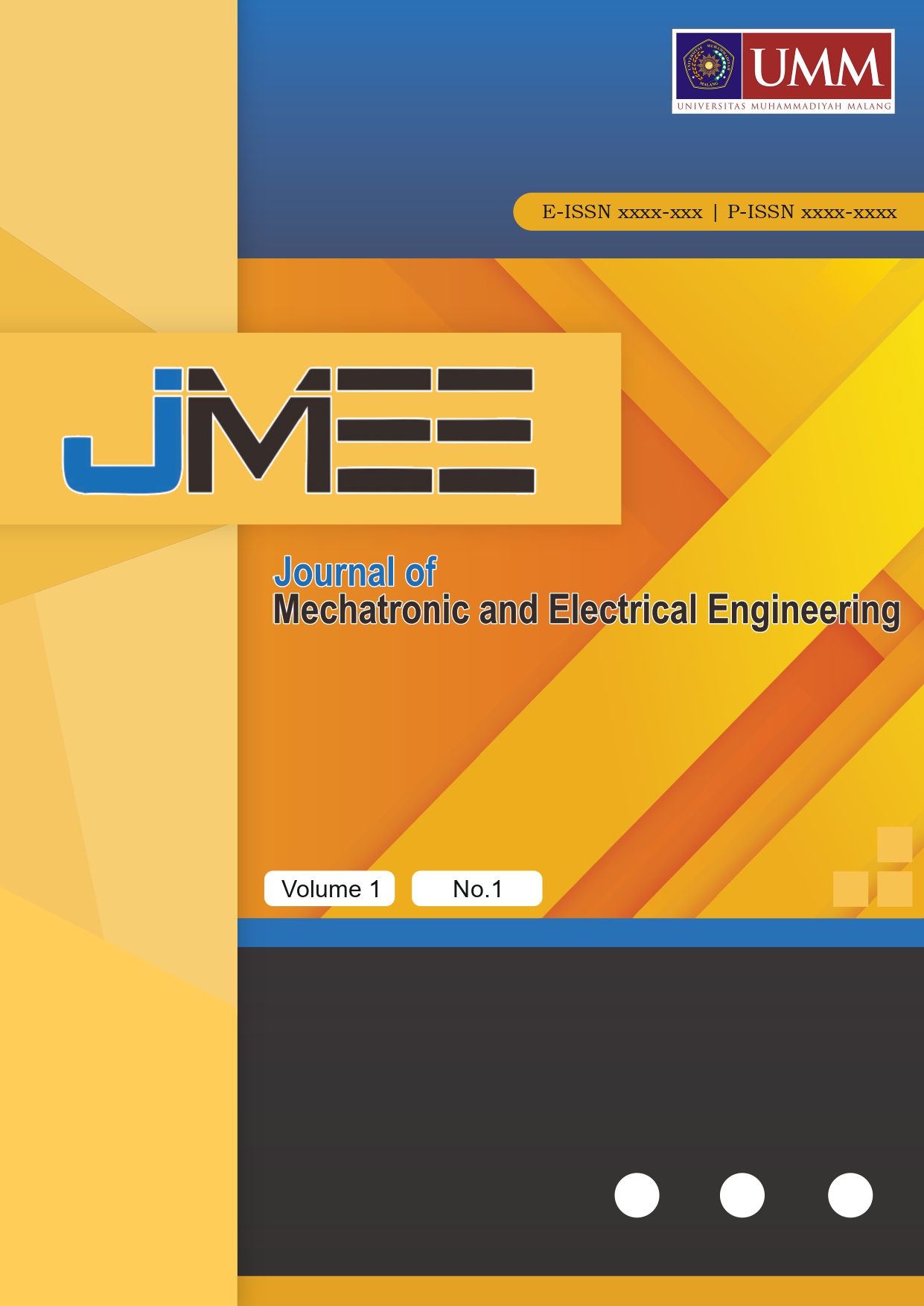Identifikasi Kerusakan Outer Race Bearing Motor Pada Hoist Crane Menggunakan Metode Short Time Fourier Transform
Keywords:
Motor Induksi, Bearing, Short Time Fourier Transform, Outer RaceAbstract
Motor induksi merupakan motor arus bolak-balik (AC) yang paling luas digunakan. Penggunaan motor di perusahaan industri adalah sebagai penggerak utama proses produksi, dimana untuk menunjang berbagai sistem produksi. Salah satu mesin penunjang proses produksi adalah mesin hoist crane dimana mesin tersebut termasuk jenis pesawat angkat yang banyak dipakai sebagai alat pengangkat dan pengangkut yang terdapat pada bagian dalam maupun luar pabrik. Menurut survey Electric Power Research Institute (EPRI) ada sebanyak 6.312 kasus kerusakan motor sedangkan survey dari Motor Reability Working Group IEEE-IAS ada sebanyak 1.141 kasus kerusakan motor. Survey tersebut banyak disumbang oleh kerusakan bearing baik dari outer-race maupun inner-race yaitu sekitar 41-44% kerusakan. Sehingga diperlukan adanya pendeteksian awal kerusakan pada bagian outer race bearing motor hoist crane sebelum kerusakan nya menjadi semakin parah. Pengolahan data dilakukan oleh program Microsoft Exel yang kemudian menjadi data inputan untuk diolah dengan pemberian algoritma Short Time Fourier Transform (STFT) menggunakan aplikasi MATLAB 2016a. Pengujian juga dilakukan dengan cara pemberian beban variasi tanpa beban, beban seperempat, beban setengah, beban tigaperempat dan beban penuh. Hasil pengujian menunjukkan bahwa algoritma short time fourier transform (STFT) mampu mendeteksi perbedaan kondisi bearing normal maupun rusak pada bagian outer race bearing yang terdapat di motor induksi.
Downloads
References
P. S. Prabowo and S. A. Christianto, “Operasi Motor Induksi Tiga Fasa Pada Sistem Satu Fasa,” vol. 12, no. 2, pp. 124–129, 2017.
J. M. Listrik, P. M. Listrik, P. E. Energi, D. P. Opsi, and L. Kerja, “Pedoman efisiensi energi untuk Industri di Asia: Motor listrik 1.,” energy Effic. asia.org ©UNEP 1, pp. 1–26, 2004.
H. S. Kuswara, “Menurunnya daya angkat,” 2020.
A. Da Silva, “Induction motor fault diagnostic and monitoring methods,” no. May, pp. 1–159, 2006, [Online]. Available: http://www.eng.mu.edu/demerdashn/Bios/Aderiano da Silva/MS Thesis (Aderiano da Silva).pdf.
S. Partha Sarathee Bhowmik1, “Fault Diagnostic and Monitoring Methods of Induction Motor: a Review,” Int. J. Appl. Control. Electr. Electron. Eng., vol. 1, no. 1, pp. 01–18, 2018, doi: 10.5281/zenodo.1479976.
I. Qomah, D. A. Asfani, and D. C. Riawan, “Deteksi Kerusakan Batang Rotor Pada Motor Induksi Menggunakan Analisis Arus Mula Berbasis Hilbert Transform,” J. Tek. ITS, vol. 5, no. 2, 2016, doi: 10.12962/j23373539.v5i2.16054.
R. Z. Haddad, C. A. Lopez, J. Pons-llinares, J. Antonino-daviu, E. G. Strangas, and U. P. De Valencia, “Outer Race Bearing Fault Detection in Induction Machines Using Stator Current Signals.”
M. Abduh, I. D.P.K, and B. Y. Dewantara, “Deteksi Kerusakan Outer Race Bearing pada Motor Induksi Menggunakan Analisis Arus Stator,” Semin. Nas. Inov. dan Apl. Teknol. di Ind., vol. 1, no. 2, pp. 1–6, 2019.
A. Ghods and H. Lee, “A Frequency-Based Approach to Detect Bearing Faults in Induction Motors Using Discrete Wavelet Transform,” pp. 121–125, 2014.
Y. N. Jeng and Y. C. Cheng, “Short time fourier transform for time series data,” Hangkong Taikong ji Minhang Xuekan/Journal Aeronaut. Astronaut. Aviat., vol. 39 A, no. 2, pp. 117–128, 2007, doi: 10.6125/JoAAA.200706.
B. R. O. Baptista, M. B. Abadi, A. M. S. Mendes, and S. M. A. Cruz, “The performance of a three-phase induction motor fed by a three-level NPC converter with fault tolerant control strategies,” Proc. - 2013 9th IEEE Int. Symp. Diagnostics Electr. Mach. Power Electron. Drives, SDEMPED 2013, no. May 2016, pp. 497–504, 2013, doi: 10.1109/DEMPED.2013.6645761.
Downloads
Published
How to Cite
Issue
Section
License
Copyright (c) 2021 Journal of Mechatronic and Electrical Engineering

This work is licensed under a Creative Commons Attribution-ShareAlike 4.0 International License.
Authors who publish with Journal of Mechatronic and Electrical Engineering (JMEE) agree to the following terms:
- For all articles published in JMEE, copyright is retained by the authors. Authors give permission to the publisher to announce the work with conditions. When the manuscript is accepted for publication, the authors agree to automatic transfer of the publishing right to the publisher.
- Authors retain copyright and grant the journal right of first publication with the work simultaneously licensed under a Creative Commons Attribution-ShareAlike 4.0 International License that allows others to share the work with an acknowledgment of the work's authorship and initial publication in this journal.
- Authors are able to enter into separate, additional contractual arrangements for the non-exclusive distribution of the journal's published version of the work (e.g., post it to an institutional repository or publish it in a book), with an acknowledgment of its initial publication in this journal.
- Authors are permitted and encouraged to post their work online (e.g., in institutional repositories or on their website) prior to and during the submission process, as it can lead to productive exchanges, as well as earlier and greater citation of published work (See The Effect of Open Access).

This work is licensed under a Creative Commons Attribution-ShareAlike 4.0 International License.







